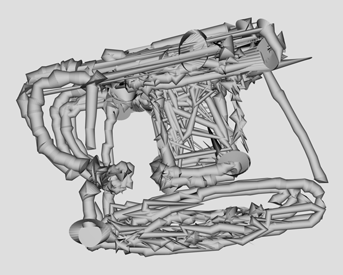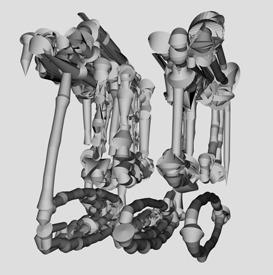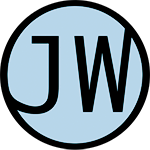Turning Sketches
into 3D Models
into 3D Models
Jennifer Weiler
in collaboration with Piyum Fernando and Stacey Kuznetsov
This page describes my contribution to a larger project by Piyum Fernando (with advisor Stacey Kuznetsov). Piyum has been working on tracking artist hand movements as they sketch on paper. He records both the position and pressure data of the drawings, and has translated them into simple animations. The data for the animations is stored as xy position data, which I used to generate digital images and 3D models.
To see more about Piyum Fernando's work about tracking artist hand movements, click here.
Turning Sketching Data into Bas-Relief Sculptures
The first thing I tried was generating bas-relief sculptures from the sketch data. I have already created a program to turn greyscale images into bas-relief sculptures (to see more about that, click here), so the main thrust of this project was trying to determine the best way to generate greyscale images from the xy position and pressure data. I chose to approach this by having the pressure of each stroke affect the darkness of that line, and the speed of the stroke (distance between consecutive xy points) affect the width of the line.
The resulting 3D models give the impression of the pressure of the artist's strokes being pushed back out of the paper.
The resulting 3D models give the impression of the pressure of the artist's strokes being pushed back out of the paper.
Below: examples of a lamp drawn by different artists
(sketches generated from recorded from drawing position and pressure data)
(sketches generated from recorded from drawing position and pressure data)

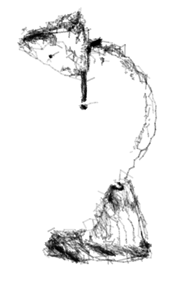
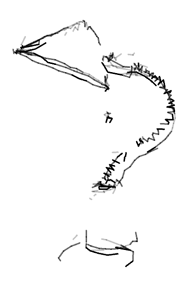
Left: sketch generated from drawing position and pressure data.
Center: bas-relief sculpture generated from sketch.
Right: 3D print of bas-relief sculpture.
Center: bas-relief sculpture generated from sketch.
Right: 3D print of bas-relief sculpture.

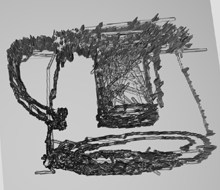
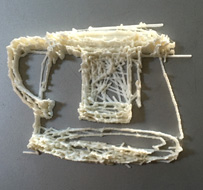
Below: examples of 3D prints next to the original artist sketches.

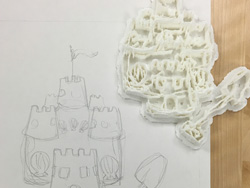
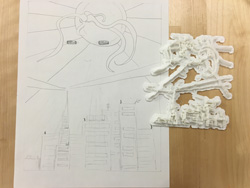
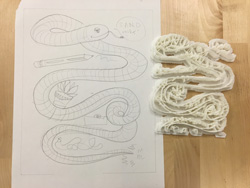
Turning Sketching Data into Time-Sculpture
As an alternative way of representing the data visually, I created a 3D sculpture composed of a bendable tube which traces the sketch data over time. In this case, time is represented by the z axis, where the xy position is taken from the xy sketch data. The pressure data is used to determine the thickness of the tube at different points in the sculpture.
To see more about visualizing animation as sculpture
(using programmatically generated abstract drawings), click here.
To see more about generating 3D models composed of bendable tubes, click here.
The results do a good job visually representing how the artist drew the sketch while at the same time displaying what the finished sketch looked like (depending on the angle the sculpture is viewed from). However, they are so thin that it is unclear how they could be effectively 3D printed. In the future, I hope to look into possible ways of 3D printing these works.
Below: front view and side view of sculpture generated
by using the time-based tracking of the artist's sketching process.
by using the time-based tracking of the artist's sketching process.
